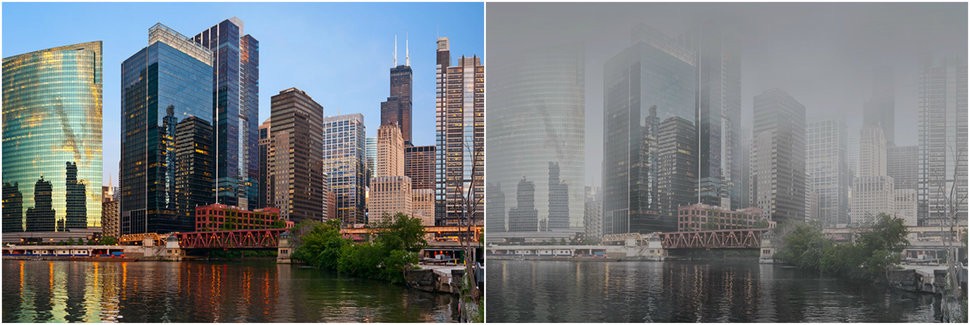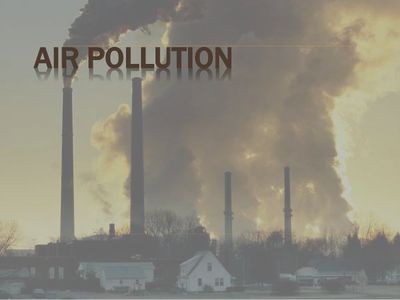Difference between revisions of "ISSS608 2018-19 T1 Assign Zhang Yanli"
(Created page with "<div style=background:#b4bcca border:#A3BFB1> 295px <font size = 6; color="#FFFFFF"> ISSS608 2018-19 T1 Assign Chen Jingyi</font> </div> <!--MAIN...") |
|||
| (26 intermediate revisions by the same user not shown) | |||
| Line 1: | Line 1: | ||
| − | <div style=background:# | + | <div style=background:#808080 border:#808080> |
| − | [[File: | + | [[File:zylciti.jpg|center|1100px]] |
| − | <font size = 6; color="#FFFFFF"> | + | <font size = 6; color="#FFFFFF"> <big>'''Spatio-temporal patterns of air quality in Sofia City'''</big></font> |
</div> | </div> | ||
| + | |||
<!--MAIN HEADER --> | <!--MAIN HEADER --> | ||
{|style="background-color:#808080;" width="100%" cellspacing="0" cellpadding="0" valign="top" border="0" | | {|style="background-color:#808080;" width="100%" cellspacing="0" cellpadding="0" valign="top" border="0" | | ||
| style="font-family:Century Gothic; font-size:100%; solid #1B338F; background:#808080; text-align:center;" width="20%" | | | style="font-family:Century Gothic; font-size:100%; solid #1B338F; background:#808080; text-align:center;" width="20%" | | ||
; | ; | ||
| − | [[ISSS608 2018-19 T1 Assign | + | [[ISSS608 2018-19 T1 Assign Zhang Yanli_Background| <font color="#FFFFFF">Background</font>]] |
| + | | style="font-family:Century Gothic; font-size:100%; solid #1B338F; background:c1bdba; text-align:center;" width="20%" | | ||
| + | ; | ||
| + | [[ISSS608 2018-19 T1 Assign Zhang Yanli_Task1| <font color="#FFFFFF">Task1</font>]] | ||
| style="font-family:Century Gothic; font-size:100%; solid #1B338F; background:c1bdba; text-align:center;" width="20%" | | | style="font-family:Century Gothic; font-size:100%; solid #1B338F; background:c1bdba; text-align:center;" width="20%" | | ||
; | ; | ||
| − | [[ISSS608 2018-19 T1 Assign | + | [[ISSS608 2018-19 T1 Assign Zhang Yanli_Task2| <font color="#FFFFFF">Task2</font>]] |
| style="font-family:Century Gothic; font-size:100%; solid #1B338F; background:c1bdba; text-align:center;" width="20%" | | | style="font-family:Century Gothic; font-size:100%; solid #1B338F; background:c1bdba; text-align:center;" width="20%" | | ||
; | ; | ||
| − | [[ISSS608 2018-19 T1 Assign | + | [[ISSS608 2018-19 T1 Assign Zhang Yanli_Task3| <font color="#FFFFFF">Task3</font>]] |
| − | | style="font-family:Century Gothic; font-size:100%; solid # | + | | style="font-family:Century Gothic; font-size:100%; solid #1B338F; background:c1bdba; text-align:center;" width="20%" | |
; | ; | ||
| − | [[ISSS608 2018-19 T1 Assign | + | [[ISSS608 2018-19 T1 Assign Zhang Yanli_Methodology & Dashboard Design | <font color="#FFFFFF">Methodology & Dashboard Design</font>]] |
| style="font-family:Century Gothic; font-size:100%; solid #8D99C7; background:#808080; text-align:center;" width="20%" | | | style="font-family:Century Gothic; font-size:100%; solid #8D99C7; background:#808080; text-align:center;" width="20%" | | ||
; | ; | ||
| − | + | |} | |
| + | <!--MAIN HEADER--> | ||
| + | |||
| + | =To be a Visual Detective= | ||
| + | Air pollution is an important risk factor for health in Europe and worldwide. A recent review of the global burden of disease showed that it is one of the top ten risk factors for health globally. Worldwide an estimated 7 million people died prematurely because of pollution; in the European Union (EU) 400,000 people suffer a premature death. The Organization for Economic Cooperation and Development (OECD) predicts that in 2050 outdoor air pollution will be the top cause of environmentally related deaths worldwide. In addition, air pollution has also been classified as the leading environmental cause of cancer. | ||
| − | | | + | Air quality in Bulgaria is a big concern: measurements show that citizens all over the country breathe in air that is considered harmful to health. For example, concentrations of PM2.5 and PM10 are much higher than what the EU and the World Health Organization (WHO) have set to protect health. |
| + | |||
| + | Bulgaria had the highest PM2.5 concentrations of all EU-28-member states in urban areas over a three-year average. For PM10, Bulgaria is also leading on the top polluted countries with 77 on the daily mean concentration (EU limit value is 50 ). | ||
| + | |||
| + | According to the WHO, 60 percent of the urban population in Bulgaria is exposed to dangerous (unhealthy) levels of particulate matter (PM10). | ||
| + | |||
| + | {| | ||
| + | |[[File:factory.jpg|400px|frameless|left]] | ||
| + | |- | ||
|} | |} | ||
| − | + | ||
| + | =Task 1: Spatio-temporal Analysis of Official Air Quality= | ||
| + | Characterize the past and most recent situation with respect to air quality measures in Sofia City. | ||
| + | # What does a typical day look like for Sofia city? | ||
| + | # Do you see any trends of possible interest in this investigation? | ||
| + | # What anomalies do you find in the official air quality dataset? | ||
| + | # How do these affect your analysis of potential problems to the environment? | ||
| + | |||
| + | =Task 2: Spatio-temporal Analysis of Citizen Science Air Quality Measurements= | ||
| + | * Characterize the sensors' coverage, performance and operation. | ||
| + | * Are they well distributed over the entire city? | ||
| + | * Are they all working properly at all times? | ||
| + | * Can you detect any unexpected behaviors of the sensors through analyzing the readings they capture? | ||
| + | * Which part of the city shows relatively higher readings than others? Are these differences time dependent? | ||
| + | |||
| + | =Task 3= | ||
| + | Urban air pollution is a complex issue. There are many factors affecting the air quality of a city. Some of the possible causes are: | ||
| + | * Local energy sources. For example, according to Unmask My City, a global initiative by doctors, nurses, public health practitioners, and allied health professionals dedicated to improving air quality and reducing emissions in our cities, Bulgaria’s main sources of PM10, and fine particle pollution PM2.5 (particles 2.5 microns or smaller) are household burning of fossil fuels or biomass, and transport. | ||
| + | * Local meteorology such as temperature, pressure, rainfall, humidity, wind etc | ||
| + | * Local topography | ||
| + | * Complex interactions between local topography and meteorological characteristics. | ||
| + | * Trans-boundary pollution for example the haze that intruded into Singapore from our neighbors. | ||
| + | |||
| + | =The Data Sets= | ||
| + | Four major data sets in zipped file format are provided for this assignment, they are: | ||
| + | * Official air quality measurements (5 stations in the city)(EEA Data.zip) – as per EU guidelines on air quality monitoring see the data description https://drive.google.com/file/d/1v5yCL-LdriDwa65qXPbFL7b0tydylDlb/view | ||
| + | * Citizen science air quality measurements (Air Tube.zip), incl. temperature, humidity and pressure (many stations) and topography (gridded data). | ||
| + | * Meteorological measurements (1 station) (METEO-data.zip): Temperature; Humidity; Wind speed; Pressure; Rainfall; Visibility | ||
| + | * Topography data (TOPO-DATA) | ||
| + | They can be download by click on this [https://storage.cloud.google.com/global-datathon-2018/sofia-air/air-sofia.zip link]. | ||
| + | |||
| + | =Reference= | ||
| + | * Viz Variety Show: When to use heatmap calendars: https://www.tableau.com/about/blog/2017/2/viz-variety-show-heatmaps-66330 | ||
| + | * Date Function: https://onlinehelp.tableau.com/current/pro/desktop/en-us/functions_functions_date.htm | ||
| + | * AQI Index: https://en.wikipedia.org/wiki/Air_quality_index | ||
Latest revision as of 22:41, 18 November 2018
|
|
|
|
|
|
|
Contents
To be a Visual Detective
Air pollution is an important risk factor for health in Europe and worldwide. A recent review of the global burden of disease showed that it is one of the top ten risk factors for health globally. Worldwide an estimated 7 million people died prematurely because of pollution; in the European Union (EU) 400,000 people suffer a premature death. The Organization for Economic Cooperation and Development (OECD) predicts that in 2050 outdoor air pollution will be the top cause of environmentally related deaths worldwide. In addition, air pollution has also been classified as the leading environmental cause of cancer.
Air quality in Bulgaria is a big concern: measurements show that citizens all over the country breathe in air that is considered harmful to health. For example, concentrations of PM2.5 and PM10 are much higher than what the EU and the World Health Organization (WHO) have set to protect health.
Bulgaria had the highest PM2.5 concentrations of all EU-28-member states in urban areas over a three-year average. For PM10, Bulgaria is also leading on the top polluted countries with 77 on the daily mean concentration (EU limit value is 50 ).
According to the WHO, 60 percent of the urban population in Bulgaria is exposed to dangerous (unhealthy) levels of particulate matter (PM10).
Task 1: Spatio-temporal Analysis of Official Air Quality
Characterize the past and most recent situation with respect to air quality measures in Sofia City.
- What does a typical day look like for Sofia city?
- Do you see any trends of possible interest in this investigation?
- What anomalies do you find in the official air quality dataset?
- How do these affect your analysis of potential problems to the environment?
Task 2: Spatio-temporal Analysis of Citizen Science Air Quality Measurements
- Characterize the sensors' coverage, performance and operation.
- Are they well distributed over the entire city?
- Are they all working properly at all times?
- Can you detect any unexpected behaviors of the sensors through analyzing the readings they capture?
- Which part of the city shows relatively higher readings than others? Are these differences time dependent?
Task 3
Urban air pollution is a complex issue. There are many factors affecting the air quality of a city. Some of the possible causes are:
- Local energy sources. For example, according to Unmask My City, a global initiative by doctors, nurses, public health practitioners, and allied health professionals dedicated to improving air quality and reducing emissions in our cities, Bulgaria’s main sources of PM10, and fine particle pollution PM2.5 (particles 2.5 microns or smaller) are household burning of fossil fuels or biomass, and transport.
- Local meteorology such as temperature, pressure, rainfall, humidity, wind etc
- Local topography
- Complex interactions between local topography and meteorological characteristics.
- Trans-boundary pollution for example the haze that intruded into Singapore from our neighbors.
The Data Sets
Four major data sets in zipped file format are provided for this assignment, they are:
- Official air quality measurements (5 stations in the city)(EEA Data.zip) – as per EU guidelines on air quality monitoring see the data description https://drive.google.com/file/d/1v5yCL-LdriDwa65qXPbFL7b0tydylDlb/view
- Citizen science air quality measurements (Air Tube.zip), incl. temperature, humidity and pressure (many stations) and topography (gridded data).
- Meteorological measurements (1 station) (METEO-data.zip): Temperature; Humidity; Wind speed; Pressure; Rainfall; Visibility
- Topography data (TOPO-DATA)
They can be download by click on this link.
Reference
- Viz Variety Show: When to use heatmap calendars: https://www.tableau.com/about/blog/2017/2/viz-variety-show-heatmaps-66330
- Date Function: https://onlinehelp.tableau.com/current/pro/desktop/en-us/functions_functions_date.htm
- AQI Index: https://en.wikipedia.org/wiki/Air_quality_index

